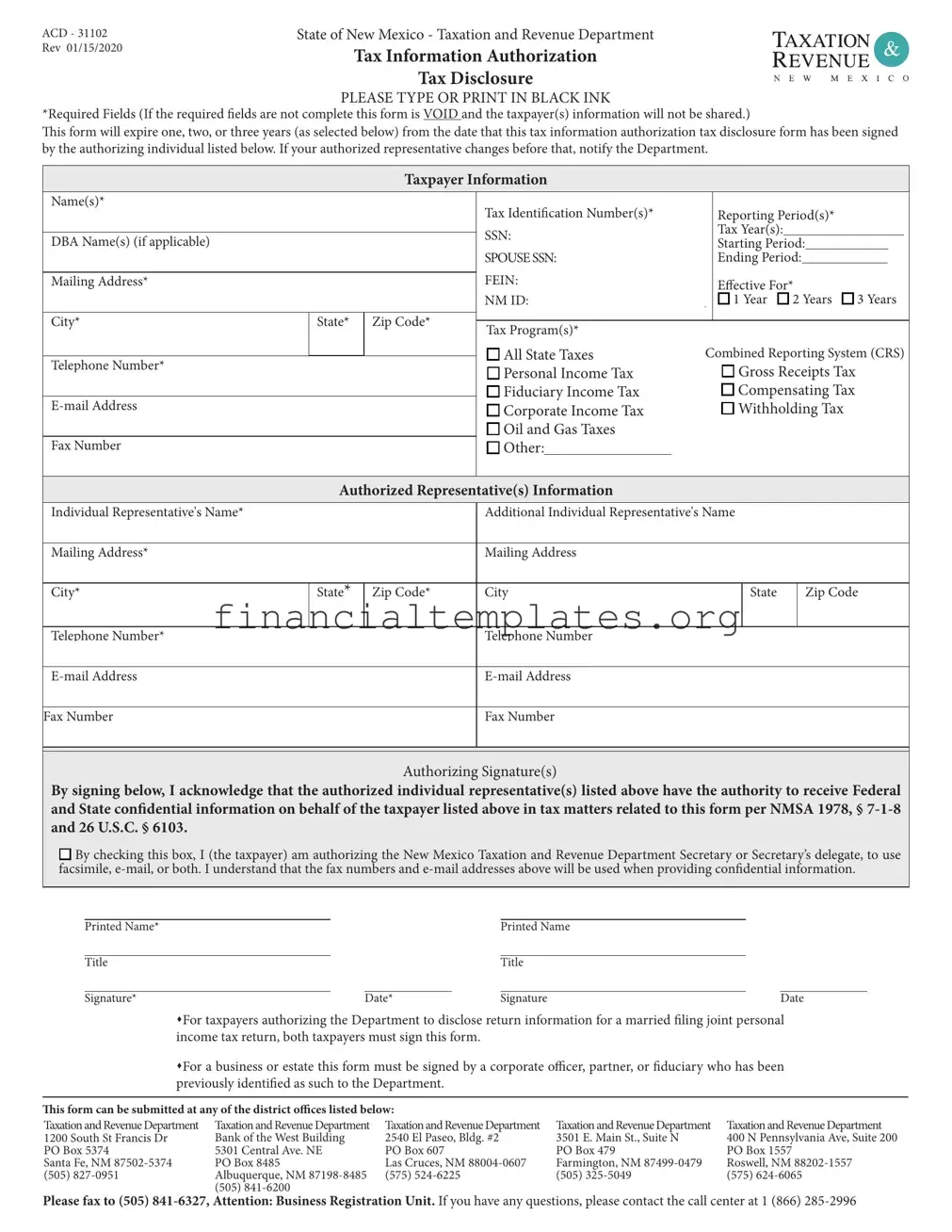The Power of Attorney (POA) form is closely related to the Tax Information Authorization form, serving a similar but broader purpose. While the Tax Information Authorization form focuses specifically on granting permission to access and discuss the taxpayer's confidential tax information, the POA goes a step further by allowing the appointed individual or organization to act on the taxpayer's behalf in a wide range of financial and legal matters beyond just tax issues. This distinction highlights the POA's broader scope of authority.
The Form 8821, Tax Information Authorization, issued by the IRS, shares a similar intention with its state-level counterpart, targeting the authorization to disclose tax information. Both forms serve the purpose of authorizing individuals or entities to receive confidential tax information, but the IRS's Form 8821 is utilized for federal tax matters. They align in function by enabling representation in discussions with tax authorities, though their jurisdictional scopes differ, one being federal and the other state-focused.
Third Party Designee Authorization, often included in the process of filing taxes, allows the tax preparer to discuss the filed tax return with the IRS. This form is somewhat like a narrower version of the Tax Information Authorization, as it is limited to discussions about the specific tax return it accompanies. It's the immediacy and specific context of the authorization that sets it apart, focusing solely on addressing issues or questions about a particular filing.
The Consent to Release form, prevalent in various bureaucratic and medical settings, echoes the intent behind the Tax Information Authorization form by allowing the release of personal or confidential information to a designated third party. Though similar in concept—granting permission to share personal information—the Consent to Release can encompass a broader range of information beyond taxes, including medical, educational, and financial records.
The Business Consent Form, commonly used when conducting transactions involving corporate entities, parallels the Tax Information Authorization form in its essence of permitting actions on one's behalf. This document enables businesses to authorize individuals or other companies to conduct specific actions or access certain information pertinent to the business. Its similarity lies in the empowerment of representation, albeit within the more focused realm of business operations.
The HIPAA Authorization Form, under the Health Insurance Portability and Accountability Act, authorizes healthcare providers to disclose an individual’s health information to specified parties. This form, while specific to medical information, parallels the Tax Information Authorization form in its fundamental function of granting permission to share confidential information with third parties, highlighting the importance of confidentiality across various sectors.
The Financial Information Release Form, often used in financial institutions and lending scenarios, permits the sharing of one's financial records with designated parties. Like the Tax Information Authorization form, this document is designed to allow third parties to access sensitive financial information, underpinning the principle of authorized disclosure for specified purposes, albeit in broader financial contexts than tax-specific matters.
The Student Information Release Form, found in educational institutions, serves a similar purpose by allowing the release of a student's academic records to specified individuals or entities. This authorization, much like the Tax Information Authorization, deals with the handling of personal information, though it focuses on educational records and achievements rather than tax details, emphasizing the theme of privacy and permission in information sharing.
The Records Release Authorization Form, utilized across various fields to authorize the sharing of different types of records, shares a core premise with the Tax Information Authorization form. Both forms are built around the concept of giving consent for third parties to access personal or confidential records, reinforcing the necessity of explicit authorization regardless of the type of information being disclosed.



 By checking this box, I (the taxpayer) am authorizing the New Mexico Taxation and Revenue Department Secretary or Secretary’s delegate, to use facsimile,
By checking this box, I (the taxpayer) am authorizing the New Mexico Taxation and Revenue Department Secretary or Secretary’s delegate, to use facsimile,